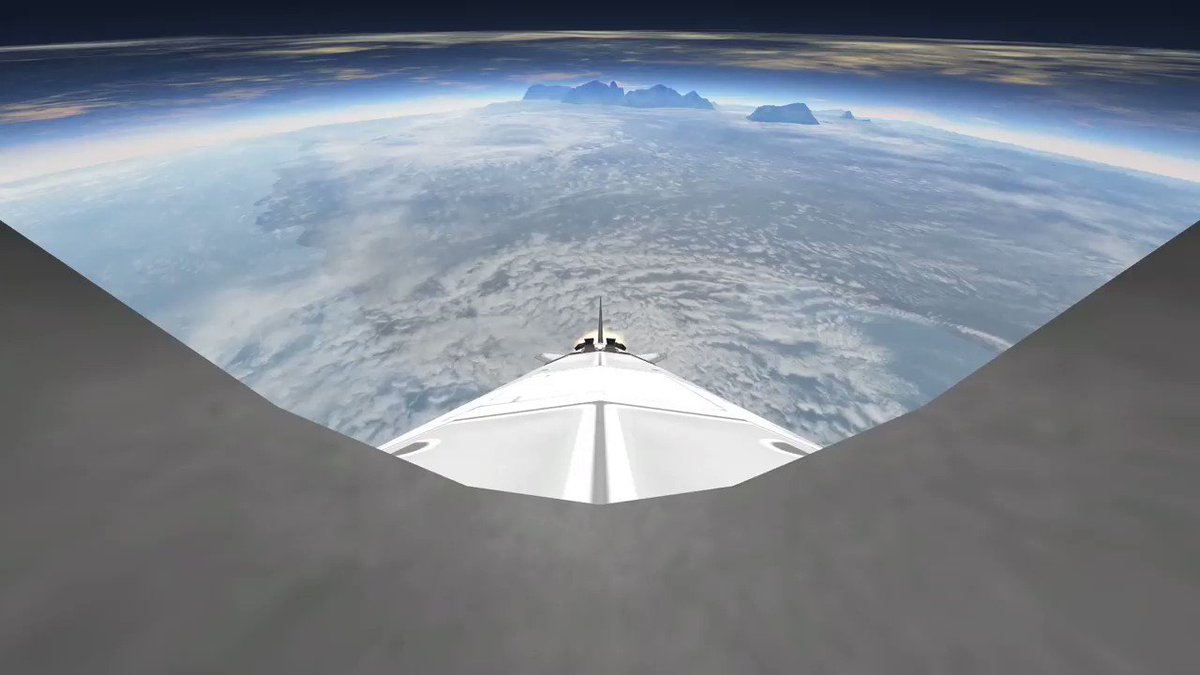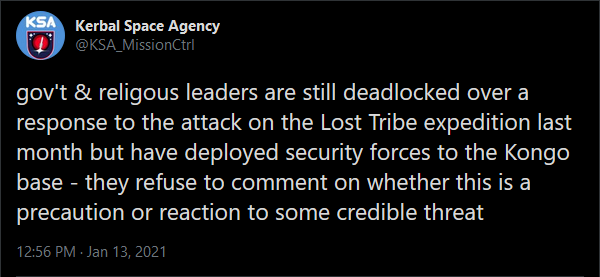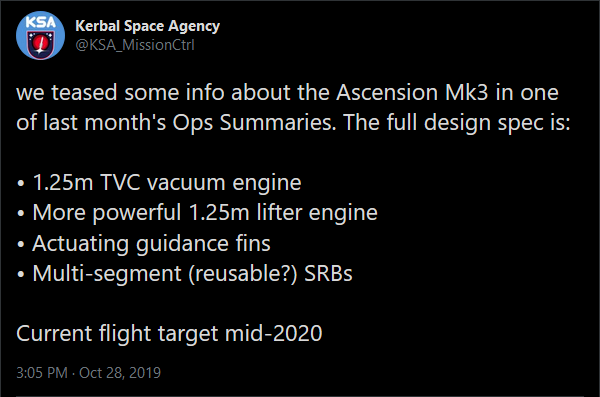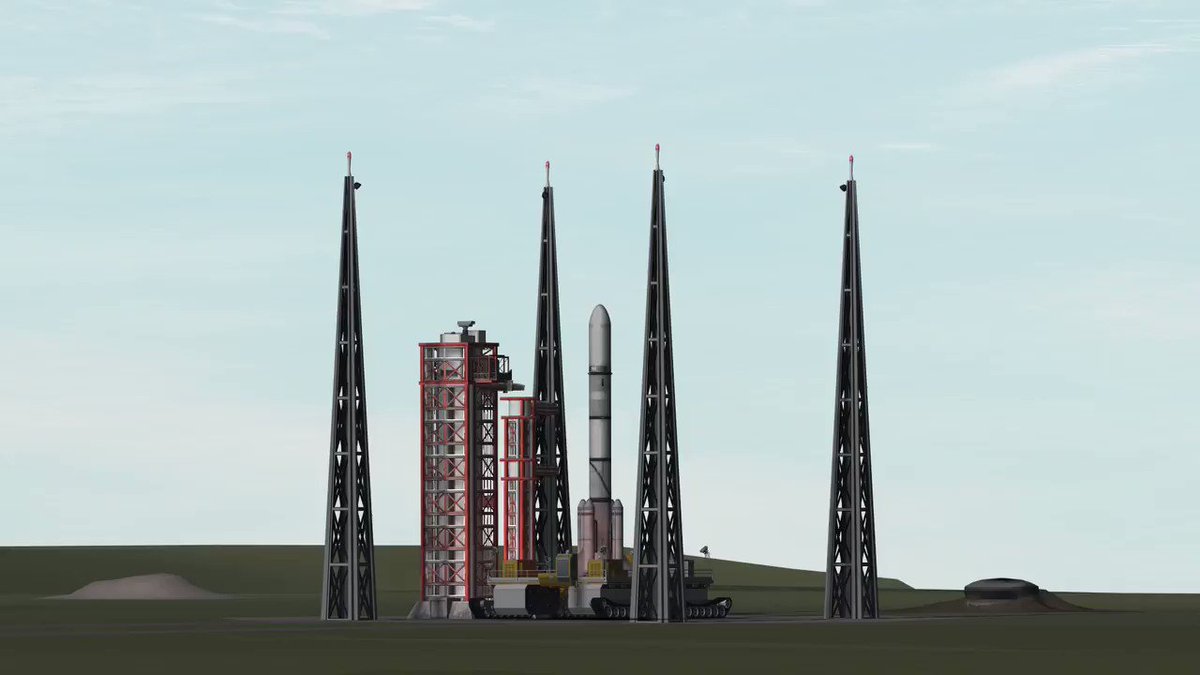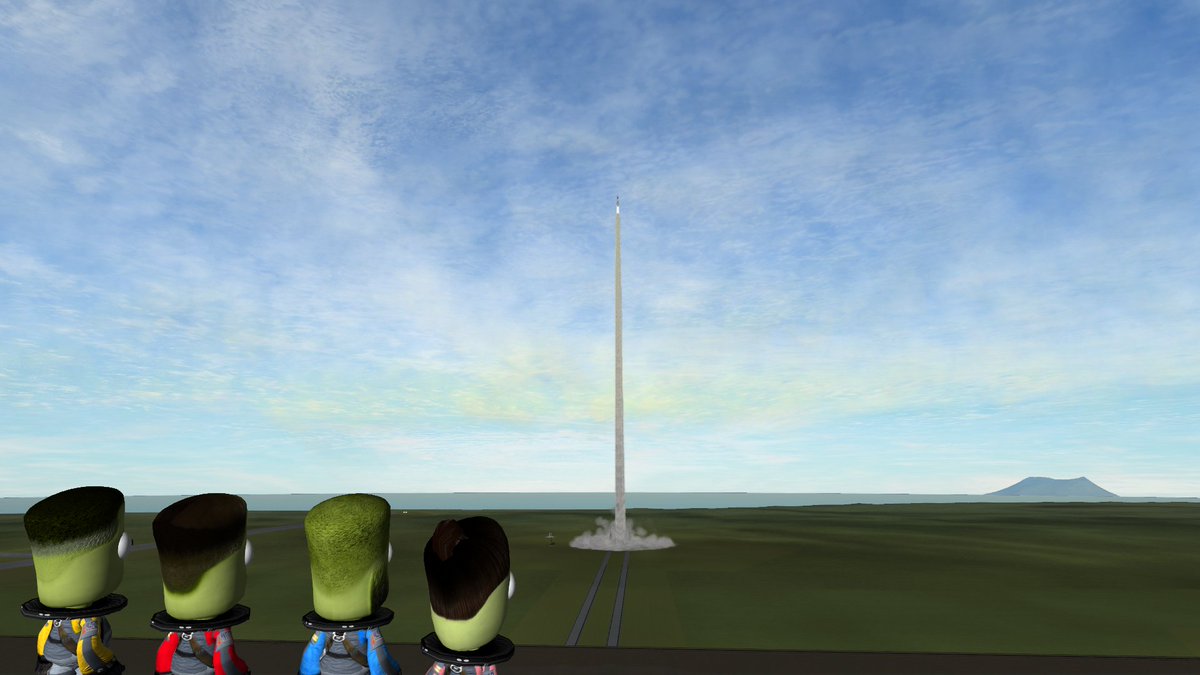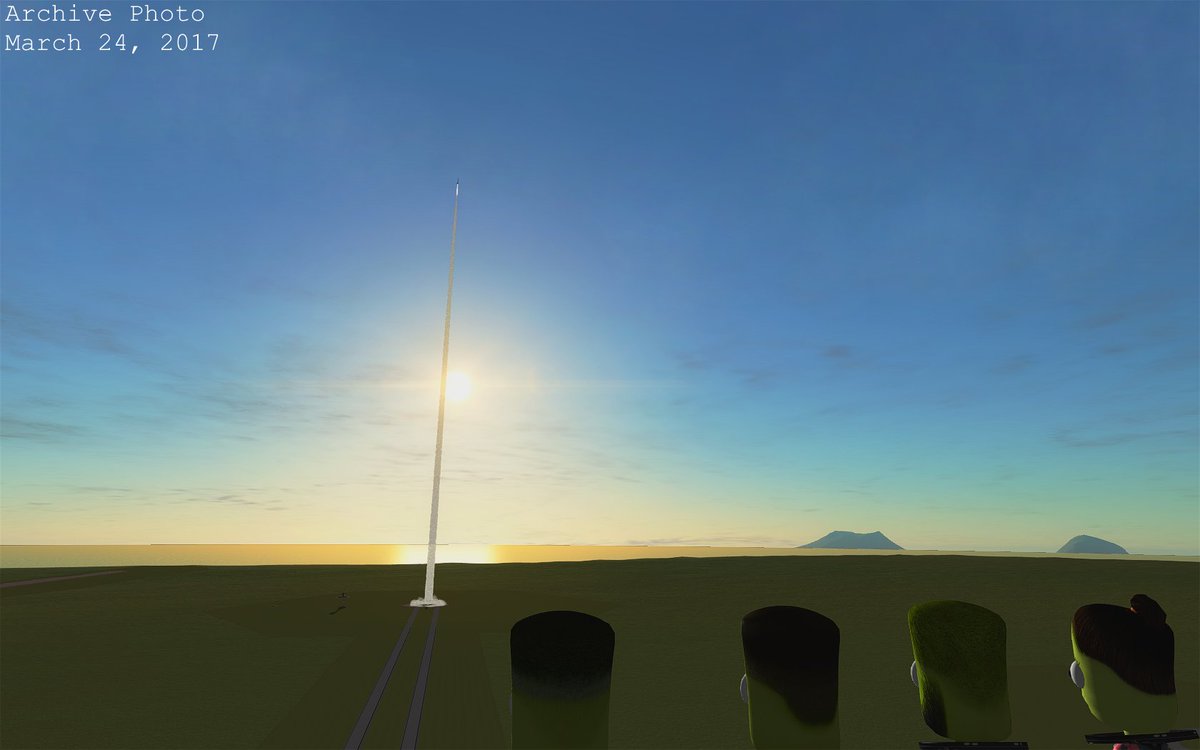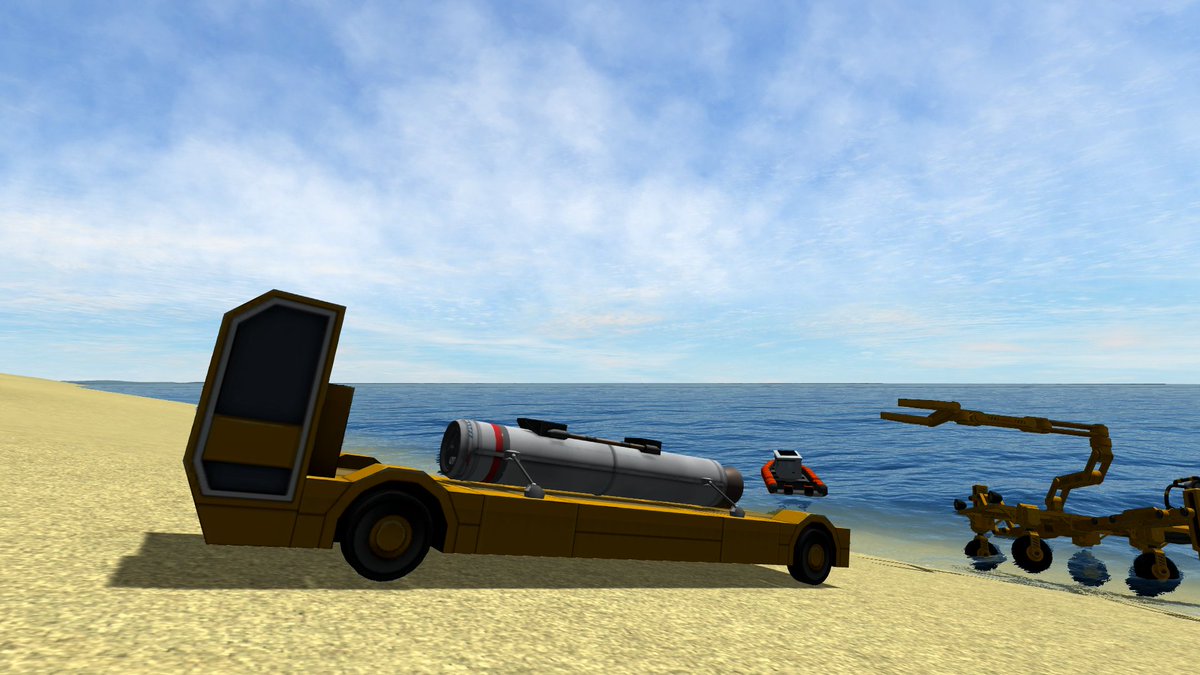|
Progeny Mk5 Block I Preps for Second Launch Attempt
All is nearing readiness for our next launch, which will once again see a new Block I rocket take to the skies – hopefully all together this time! We’ve already updated our software to check for proper ignition on all three boosters and fail gracefully when detected, and we’ve also made sure the program execution only stops when the booster has landed after the parachute has been deployed. Speaking of the parachute, one of the other considerations the team came up with during our code review was how much faster the rocket could be re-entering when falling from a higher apokee. We’ve lowered the chute’s initial deployment altitude to 2.5km from 4km, which should be enough time for the rocket to no longer be supersonic and tear the chute to shreds as it deploys. We hope. So many unknowns! We are still not entirely sure the rocket won’t break apart on ascent either. What we are sure of however is that this launch is going to be awesome regardless.
In related news, our Operations Director Drew Kerman wrote up a post yesterday on why we can’t take any space photos yet. It’s not for lack of wanting to or trying!
Also Head of Research & Development Wernher Von Kerman revealed our new dedicated accelerometer instrument, which is now undergoing final testing to be included in a future Mk5 launch.
Genesis & KerBalloon Missions
With our monthly income dipping into the red it was important we still managed to get some well-funded missions carried out. Unfortunately although we had planned for two Genesis flights today’s got postponed to after the launch next week due to weather.
We started off the week with Specialists Bob & Bill taking the longest overland trek to date, covering a total of 572km to launch and recover a low-altitude KerBalloon. Thankfully winds cooperated to allow them to launch as soon as they were onsite and not worry about the payload drifting out to sea. The trip brought the UTVs near max range of 607km each when three are deployed with one carrying the KerBalloon and the other two carrying spare fuel tanks. Although they dealt with some nasty weather on the return trip all 3 vehicles made it back safely – no landslides!.
Commander Valentina took a Civvie up north to survey a mountain that some field researchers were considering summiting. Her flight was uneventful and upon return she made her entire approach at 55% throttle, cutting back to idle as she crossed over the runway threshold at 72m/s – normally a landing would be performed at around 50m/s. It took her nearly 3/4 of the runway to coast down to a speed with which the Civvie would stay on the ground when its wheels came down, but she didn’t run off. This new, faster approach has been worked up to these past few missions and the purpose is to allow the engine alternator to generate enough current to power all the aircraft systems through descent, thus saving battery power and thus saving operating costs. Flying techniques will continue to evolve as our pilots gain more and more experience.
ATN Database Update
The weekly update for the Asteroid Tracking Network database is available here, containing 1,120 asteroids and 15 updated with new observation data
Celestial Snapshot of the Week
Specialist Bob snagged this photo while Val was still sailing back to KSC aboard the recovery ship after last week’s failed launch attempt. We’ve been wanting to show off Minmus with a lit polar region (northern seen here) for a while and this was too perfect not to get a photo of.
 From the Desk of Drew Kerman
From the Desk of Drew Kerman
Out of Character Behind the Scenes stuffWritten on 10/26/17
Oh, hello Thursday. NICE TO FUCKING SEE YOU AGAIN. Oh well, the grind continues. I was doing great earlier this week and was set to close this weekend out by Wednesday and then… things. IRL stuff not worth going into. Reset. Try again. *le sigh*
Mk5 Block I launch anomaly – the true story
So the truth behind the failure of the Mk5 launch is… exactly what happened. As I explained last week I had intended for the booster to fail, but what I didn’t intend was how the kOS code would handle the “failure”. To get the log output I ran the code and I just removed all the fuel from the first stage booster, which is why it actually activated but then read as “flamed-out!” because there was no fuel. Originally I had written that the booster would fail, the count would be reset and tried again, still failed and the rocket would get rolled back to the VAB, the ignitor replaced over the weekend and the launch re-tried on Monday. However I ended up liking the idea of the software failure much better because for one thing the problem was actually evident in the actual code I had uploaded to Github, plus it allowed me to expend the rocket and not have to do another launch so soon, which was great as I’ve been so tight on time lately. Unfortunately I had already done some extra work in writing out the events that I had planned to follow the ignition failure plus I had to go back and edit down Jeb’s Civvie mission because he wouldn’t have been in the air nearly as long as if there had been a recycle of the countdown and a second try. I actually flew within sight of the pad for the first pass, but I just didn’t have time to include any extra video – I was literally making these changes early on the day of the launch!! Ugh, I miss my lead time…
Also as of this writing I have not launched the second Mk5 Block I yet. I have no idea what’s going to happen. So all the conjecture that’s been posted has been true conjecture!
Airship delay
Without time to setup KSP v1.3.1 still, which is the environment the airship will function under, I couldn’t even begin to design it. So this project has been delayed until early next year as I hope to push out my lead again over the holiday break. Hopefully the orbital program won’t be similarly affected.
Coming in hot
Just as a reminder that I don’t make things up, here is Val’s landing from this past week. I use PhysicalTimeRatioViewer to see how slow the game is running to realtime so I can speed it up to normal in my video editor so this is real-time speed (actual speed was about 85%). After cutting the throttle you see me bump it back up a bit because AJE doesn’t have an “idle” state that continues to draw fuel when the throttle is 0. Also, fuck those wheels man. I’ve given up with them, I just land like this all the time, spinning out to a stop. Whatever. Thug life.
Website work
So I took my twitter script injection to the next level recently. First, I noticed the program pages were not actually directing you to the proper sub-section when a tab was clicked. Now, when I first built the site I noticed the twitter widget I embedded in each tab was not being re-sized to the width of the table column it was in except for the first one that was loaded with the page. The tab plugin I was using loaded all the tabs and let you switch quickly between them, but I forced it to reload the page every time you clicked a tab so the twitter embed would size properly. Well, I figured out how to use my injected script to size all the embeds so I was able to switch the tab plugin back to being fully responsive and now if you visit, say the Progenitor page, you can click through tabs without having to reload the page. Yay!
Another change I made was to reformat the timestamps in the smaller twitter embed widgets so they too would also show the tweet time, but because space was less than the collection embed shown on a full page I had to go with a different date format.
Finally I made it so every time the page loads each tweet has a random number of seconds assigned to it so they all don’t show as being posted at :00 or :01 seconds after the minute. Thinking ahead to times I want to use the Flight Tracker’s automated tweet ability to send out scheduled tweets to the second during launches, I made it so certain minutes are ignored when the random seconds are generated so these events will remain accurate.
Ops Tracker work
Head on over to the Ops Tracker and click through things in the menu. You can now select a vessel, crew member or body and the interface will adjust itself accordingly to display that information. You can still currently only view bodies but the groundwork is now laid for me to begin working on loading and displaying vessel and crew information as well. I think it’s pretty slick how things re-organize themselves (oops, crew view is actually a bit broke right now). Also the GeoGebra 3D model is fully functional now – I refactored how it was managing the various orbital elements on display and you can do things like click on a planet, select to show its nodes and then if you check the Show Nodes option at the bottom of the figure all the nodes will show and if you uncheck it all the nodes will hide but the ones you explicitly set to show through the planet info box. Head over to Kerbin to see a dynamic orbit display for the one currently captured asteroid. Click on the orbit itself to show its name and nodes – again doing this will keep them visible regardless of the global display options at the bottom. You can also hide the whole orbit using the filters on the bottom right. Clicking on the dot for the vessel’s position will switch you over to view its vessel page. More good stuff to come… when I have time again!!









